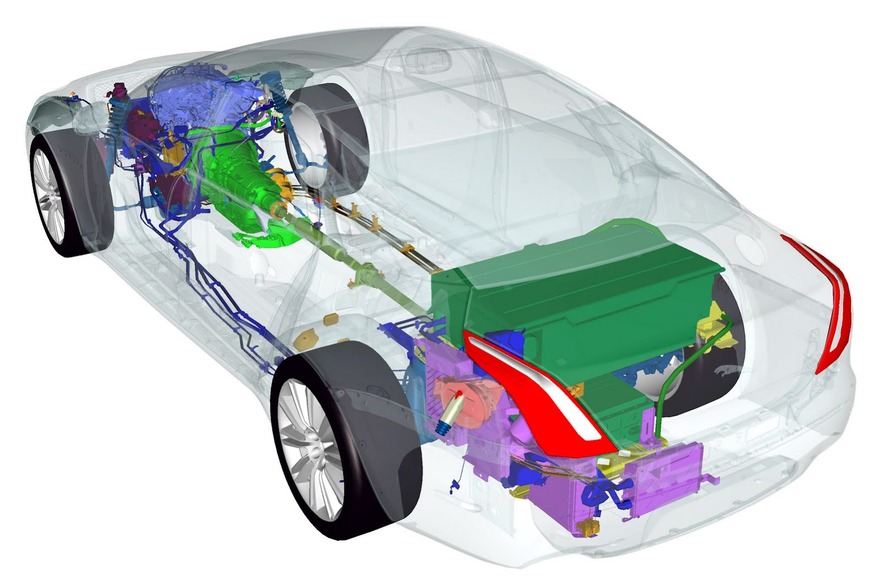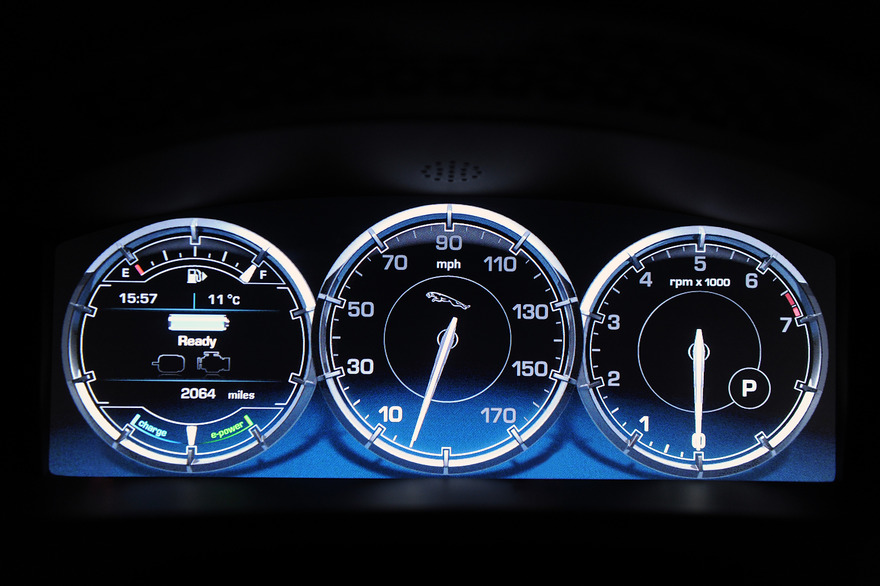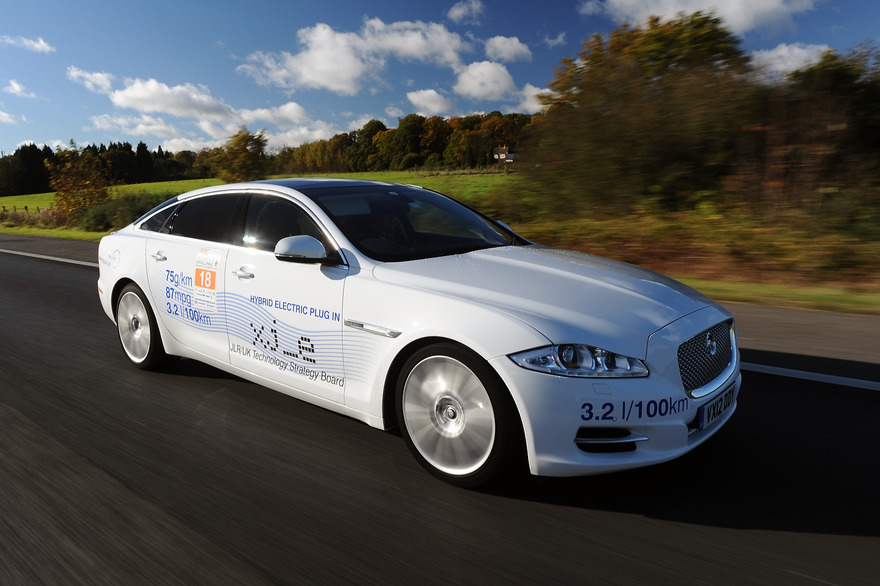Hybrid cars are becoming more popular each and every year. Jaguar-Land Rover auto group assumes that large cities all over the world will be soon featuring special eco-friendly areas with only electric cars admitted there.
In June 2012 Jaguar-Land Rover auto group revealed its plans in the sphere of electric motors at the Goodwood Festival of Speed where the world first saw the pre-production model equipped with a hybrid powerplant — Jaguar XJ-e sedan. Jaguar XJ has been produced since the end of the 60s but its latest modification is different from the models of previous generations in its revolutionary new design.
Great Britain has been concerned about the ecological issues for quite a long time already and considers eco-friendly means of transportation to be very promising. Development of eco-friendly technologies at Jaguar and Lotus companies is conducted using money from the Technology Strategy Board's REEVolution (Range Extended Electric Vehicles) project. Jaguar XJ-e model was also partially financially supported by the REEVolution project.
Bob Joyce, chief engineer at Jaguar, stated that by creating the Jaguar XJ-e hybrid the company had demonstrated that it was possible to reach baseline CO2 emissions level without sacrificing any of the vehicle’s performance. Right now the car features CO2 emissions of less than 75g/km making it 70% more eco-friendly than the standard Jaguar XJ model.
XJ-e uses plug-in hybrid technology — parallel hybrid Plug-in Hybrid Research Vehicle (PHEV) system is mated to the turbocharged 2-litre direct-injection petrol engine (the same as used in Evoque). The new engine replaced the standard 5-litre V8 used in the XJ models.
The hybrid system consists of a 69-kW (92-hp) electric motor and a 12.8-kWh lithium-ion battery. The total output produced by the powerplant is 329–340 hp. By comparison, the power produced by the stock XJ vehicle equipped with a new 3-litre supercharged V6 is the same but its mileage rating is three times worse.
The power of XJ-е engines is transmitted to the wheels via an eight-speed automatic gearbox. The sprint from 0 to 100 km/h takes 6.5 seconds; the car’s top speed is electronically limited to 250 km/h. The combined fuel consumption rate of an XJ-e is a mere 3.2 litres per 100 kilometres.
The hybrid car, like the stock XJ model, features an all-aluminium body. Air suspension, Adaptive Dynamics system (varies the damping to suit road conditions), and Active Differential Control system (electronically controlled rear differential) provided this model with great handling and dynamics. The driver can choose between travelling on petrol power, electric power or a combination of both. The embedded intelligent system automatically selects the most effective and optimised mode.
The battery is recharged in 4 hours on a 220-volt outlet. The top range hybrid can travel up to 40 km at 120 km/h of top speed powered only by electricity. When the combustion engine joins in and the fuel tank is full the car is able to cover the distance of 1092 km.
Jaguar discloses neither the date of the XJ-e Plug-in Hybrid production launch, nor the estimated price of the hybrid.
REWARD
At the annual competition RAC Future Car Challenge held in November 2012 the pre-production hybrid Jaguar XJ-e received the “Most Energy Efficient Luxury Car” award, the “Technical Panel's Award of Merit” and took first place in its class. It is one of the most spectacular events in the world of the British car industry which is held under the auspices of the Royal Automobile Club.
The company entered the competition with three hybrid concept cars Jaguar XJ-e PHEV. On the London to Brighton track (63 miles or 101 km long) they consumed only 1.2 L of petrol and 11 kWh of electric power which corresponds to 2.1L/100km consumption rate.
Peter Richings, Jaguar’s chief hybrid engineer, said that XJ-e vehicles became a real reward for the entire engineering team as the cars managed to exceed all expectations and demonstrated faultless results.
FOR THE SAKE OF WHAT
Jaguar is one of the leading British companies in the investment volumes into developing eco-friendly technologies in the sphere of car manufacturing. The company collaborates with the scientific society, suppliers and other carmakers within the framework of governmental conferences by expanding the percentage of hybrid engines including luxury car segment. Experimental cars, like XJ-e hybrid, form the essential part of the Jaguar’s global strategy on decreasing carbon dioxide emissions level.
BY THE WAY
Jaguar XJ-e is not the only electric car by Jaguar Land Rover. The new project is called Evoque-e and was launched in October 2013.












